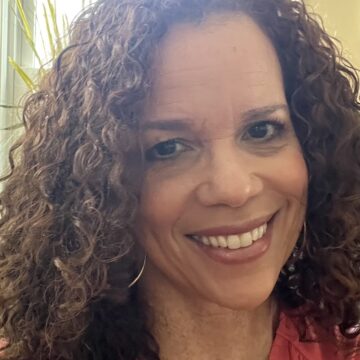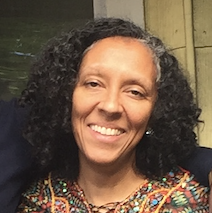Power Dynamics: The Hidden Element to Effective Meetings
July 11, 2018 3 CommentsMany articles have been devoted to running effective meetings that build collaboration among teams, yet many fail to discuss the hidden element that can destroy a meeting almost without fail.
Power dynamics – the ways in which power works in a setting – can either sink a meeting and negatively impact relationships for years, or produce more shared power and capacity to get things done. A lot of the difference comes down to how we attend to power dynamics in meetings, how well we plan our meetings, how well we determine what happens within and outside of meetings, and how well we facilitate in the moment.
In every organization, there are people who hold formal power and informal power. Formal power is attributed to someone by virtue of their title or position in the organization. People carry informal power if they have influence over others or their organization, either because of their experience, force of personality or persuasion, unearned privilege, or because they have strong relationships with decision-makers and peers. Power is also deeply influenced by diversity and equity dynamics. In most Western societies today, many decisions in organizations are still controlled by people with certain backgrounds: over 40, male, white/European, heterosexual, and middle class and wealthy people. Many feel empowered to lead, speak, and make decisions by virtue of the standing society gives to them on the basis of their background. They get a lot of practice leading and people are acculturated to following and respecting them.
Power — the capacity to get things done — is neither positive nor negative in and of itself. It’s all about how we construct, reconstruct, and practice power. Individuals can exercise their power in healthy ways if they stay focused on making space for others and growing power to achieve positive outcomes by building “power with” others. Individuals and groups can exercise their power in unhealthy ways if they are focused on establishing “power over” others or concentrating power in a few.
At IISC we have made some key observations about power in meetings:
- Power dynamics are always present in meetings whether we see them or not.
- Every meeting is a chance to build a group’s power and transform power dynamics. It’s important to design and facilitate meetings to create opportunities for power to be shared and openly discussed.
- Meeting designers and facilitators must attend to formal and informal power and the dynamics that come along with it.
- Meeting facilitators should be mindful of and acknowledge their own power and enact it in a way that builds the power of the group.
- Every element of meetings needs preparation to make power and decision-making transparent. Consider questions like: Who is at the meeting and who is not? Why or why not? What’s on the agenda and what’s not on the table for discussion that should be? Who will be making the decisions that flow from what will be discussed (both in the room and beyond)? Who plays which roles and why? What work will happen outside of the meeting? What information from the meeting should be shared and with whom?
So, what are some ways to attend to power dynamics in meetings?
- Assume power dynamics are always present in meetings. Design your meeting agenda to include multiple voices and perspectives. Lightly encourage people to step forward to lead and participate, especially if they have less power in the organization either because of role, positional status, race, gender, or other factors. Encourage people with traditional forms of formal power to do more listening than speaking.
- Build a culture of collaboration in meetings. Think of meetings as an opportunity for a team to build relationships, learn leadership, design good processes, and counteract unhealthy uses of power. Design your meetings for relationships, joy, and creativity. Good things will follow! Always build an agenda that allows people to first interact on a human basis, such as starting with opportunities for people to do a “check-in” to share how their day or week is going or to learn more about each other on a personal level. Ask people a question that surfaces their personal and professional purpose. Encourage honesty, vulnerability, and calling people “in”, instead of calling people “out”. Spread a little business love around the room, creating openings for people to feel heard and noticed, and to experience a sense of belonging and interconnectedness.
- Openly discuss power in meetings. Discuss openly with your team the question, what would be the benefits to our group if we shared power? Remind them that power is not a finite pie; rather, it can be infinite, expanded, and shared among people and leaders. Prompt them to explore how they can share “power with” each other instead of “power over.” Make a list of meeting agreements the group will use to share power. Ask people to monitor the agreements and be brave enough to intervene if people are not practicing them. Make a list of “power over” moves, so people learn the behaviors that reinforce dominant voices and power and exclude others. Have people take mental note of who is speaking the most and who is not. Make sure your discussions of power go beyond yourselves as colleagues to the people or communities you serve. How are they “at the table?” How are their priorities, assets, and skills driving the discussion?
- Remember that power is a social construct. We can design spaces where individuals and groups experience their own and others’ power differently. Be proactive about ways to amplify the power of people who are typically at the margins of the conversation. Challenge the group to pay at least as much attention to the expertise that comes from lived experience (say, of poverty) as from formal theories and data. Flip questions on their head by asking “why not do things differently?” instead of “how can we work within given boundaries?” Ensure that people who are affected by the issues you’re working on are at the center of the conversation and have meaningful roles in the work over time (inside meetings and beyond).
- Use your role intentionally and thoughtfully if you’re the meeting facilitator. Don’t dominate the discussion. Don’t come up with all the ideas. Stay as impartial as possible, even though you can never truly be completely neutral. If you want to contribute an idea or experience, tell the group you are switching from facilitator role to express your view as an individual and then step back into your facilitator role. Examine who gets to facilitate meetings and who doesn’t. Meeting facilitators can change the outcome of the meeting just by how they design and run it. Rotating facilitation and supporting people to learn how to facilitate and run meetings distributes power and makes meetings more dynamic.
The skills of meeting facilitation with a lens to share power are teachable and replicable. At IISC, we share some of those skills through training and consulting. We have learned that meetings that are both well facilitated and that attend to power dynamics can transform groups into highly functioning teams with deeper purpose and intention for social change.




3 Comments